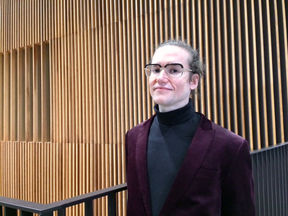'I know you think I’m crazy'

What is your research about?
My dissertation is in the field of art education, and I investigate stereotypical cultural representations of people with psychiatric disabilities through art and popular culture. My starting point is that people with mental health problems or disabilities are subject to stigmatizing, strong stereotypes and myths. However, these are not connected to reality, but instead, minorities are generally presented in our culture inadequately and in a limited way. They are pigeonholed to a certain position and identity in society, and in a way that is hard to break.
I wanted to find artists who have dealt with madness or mental health problems in an interesting way, challenging stereotypes. I found the strongest resonance in rap lyrics and rap artists who have described their own experiences of mental health problems or disability. The subjects I am investigating are American rappers, whose art addresses deprivation and exclusion that is linked to the racist heritage of the society and culture in many ways.
So my work is about stereotypes and stigmas that reflect and, on the other hand, produce our perceptions of what people are. I am trying to show how they can be challenged, criticized and dismantled using artistic methods. I also outline strategies to counter and diversify cultural stereotypes.
Mikko KoivistoMy aim is to be able to diversify the way the imagery on disability and illness is treated."
What're the most important points?
I want to point out that stereotypes and cultural imagery are like structures we are chained to; they define us from a young age, whether we want them to or not. They give us a set of boundary conditions on how we perceive the world - and other people.
In my dissertation, I’m sketching a metaphor that illustrates how persons with a mental or other disability can refuse and renounce the definition given to them in the prevailing culture and instead define it themselves. To describe this phenomenon I found term egress, which means the possibility of getting off, departing or refusing.
In my dissertation articles, I have tried to develop egress (refusal) as a response to these entangling concepts, images and stereotypes. In the rap lyrics I have dealt with, egress has been handled in a versatile and interesting way and they open up perspectives on how people with mental health problems or disabilities see themselves.
How can your research be utilised?
I want to deal with art and pictures in a way that could be useful to my field, and I hope my research and theses can be utilized in art education research and in teacher training, as two examples.
My aim is to be able to diversify the way the imagery on disability and illness is treated. It would be great if egress could be explored in other contexts too - would it be of use in the discussion of other groups of people and the power exercised over them?
In our culture, people with disabilities have always been portrayed negatively, so they will have to create new stories about their experiences of disability and to define themselves. The rap lyrics I have researched provide a whole new context; they combine, for example, myths of violence and danger associated with madness to autobiographical stories in parodic, almost carnivalesque ways. This creates a fascinating contradiction and can contribute to empowerment.
***
The title 'I know you think I'm crazy' is taken from rap artist Tyler, the Creator's song WOLF.
Koivisto defended his dissertation “The Art of Egress: Madness, Horror, and the Pedagogy of Depsychiatrization” on 20 December, 2019.
- Published:
- Updated:
Read more news

DeployAI Partners Gather for Heart Beat Meeting in Helsinki
The European DeployAI project's partners gathered for the Heart Beat meeting hosted by Aalto University Executive Education in Helsinki.
Get to know us: Associate Professor Maria Sammalkorpi
Sammalkorpi received her doctorate from Helsinki University of Technology 2004. After her defence, she has worked as a researcher at the Universities of Princeton, Yale and Aalto.
Aalto computer scientists in ICML 2024
Computer scientists in ICML 2024